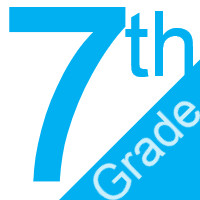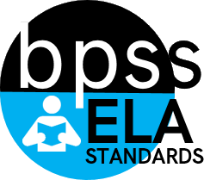ELA-07.L.01
|
7th Grade ELA Targeted Standards
(L) Language Strand
Cluster: Conventions of Standard English
ELA-07.L.01 Demonstrate command of the conventions of standard English grammar and usage when writing or speaking.
- b. Choose among simple, compound, complex, and compound-complex sentences to signal differing relationships among ideas.
- c. Place phrases and clauses within a sentence, recognizing and correcting misplaced and dangling modifiers.
|
Student Learning Targets for Grade 7 ELA:
Knowledge Targets
- I can understand sentence structure and choose writing strategies to create sentences.
- I can define appropriate conventions of sentence structure; i.e. simple, compound sentences, fragments, and run-ons.
- I can identify various types of sentences. i.e. simple, compound, complex, compound-complex.
Reasoning Targets
- I can distinguish between different types of sentences. i.e., simple, compound, complex, compound-complex.
Skills (Performance) Targets
- I can choose among simple, compound, complex, and compound-complex sentences to signal differing relationships among ideas (7.1b)
- I can place phrases and clauses within a sentence (7.1c)
- I can vary sentence structure.
- I can use correct conventions of grammar to create effective sentences.
- I can assemble examples of the different types of sentences. i.e., simple, compound, complex, compound-complex.
- I can use punctuation marks correctly according to the sentence structure need.
Product Targets
- I can produce a piece of writing that demonstrates a variety of examples of each sentence type. i.e., simple, compound, complex, compound-complex.
Proficiency Scale
| Score |
|
L.7.1 Demonstrate command of the conventions of standard English grammar and usage when writing or speaking. |
Sample Activity
|
| 4.0 |
In addition to Score 3.0, the student demonstrates consistent and mature usage and application of phrases and clauses by utilizing all four sentences in a cohesive writing. |
|
| |
3.5 |
In addition to Score 3.0 performance, the student demonstrates.mature usage and application of phrases and clauses by utilizing all four sentences in a cohesive writing. |
| 3.0 |
“The Standard.” The student demonstrates no major errors or omissions regarding any of the information and processes that were end of instruction expectations.
The student can
-
Choose among simple, compound, complex, and compound-complex sentences to signal differing relationships among ideas. (7.1b)
- Place phrases and clauses within a sentence, recognizing and correcting misplaced and dangling modifiers. (7.1c)
|
- Group activity – compose a paragraph containing one of each sentence type; exchange with partners to identify the types of sentences
- Super sentences – creating and building sentences
|
| |
2.5 |
The student demonstrates no major errors or omissions regarding the simpler details and processes (Score 2.0 content) and partial knowledge of the more complex ideas and processes (Score 3.0 content). |
| 2.0 |
There are no major errors or omissions regarding the simpler details and processes as the student:
- recognizes or recalls specific terminology, such as:
- clause, complex sentence, compound sentence, compound-complex sentence, grammar, phrase, relationship, sentence, simple sentence, usage
- performs basic processes, such as:
- using grade-appropriate grammar and usage in isolation
However, the student exhibits major errors or omissions regarding the more complex ideas and processes.
|
- Practice definitions/meanings of vocabulary
- Given 10 sentences, students can identify types of sentences.
|
| |
1.5 |
The student demonstrates partial knowledge of the simpler details and processes (Score 2.0 content) but exhibits major errors or omissions regarding the more complex ideas and procedures (Score 3.0 content). |
| 1.0 |
With help, the student demonstrates a partial understanding of some of the simpler details and processes (Score 2.0 content) and some of the more complex ideas and processes (Score 3.0 content). |
|
| |
0.5 |
With help, the student demonstrates a partial understanding of some of the simpler details and processes (Score 2.0 content) but not the more complex ideas and processes (Score 3.0 content). |
Resources
Websites
Vocabulary
|
 Standards Glossaries
Standards Glossaries Standards Glossaries
Standards Glossaries Standards Glossaries
Standards Glossaries Standards Glossaries
Standards Glossaries Standards Glossaries
Standards Glossaries



 Strand (RI)
Strand (RI)